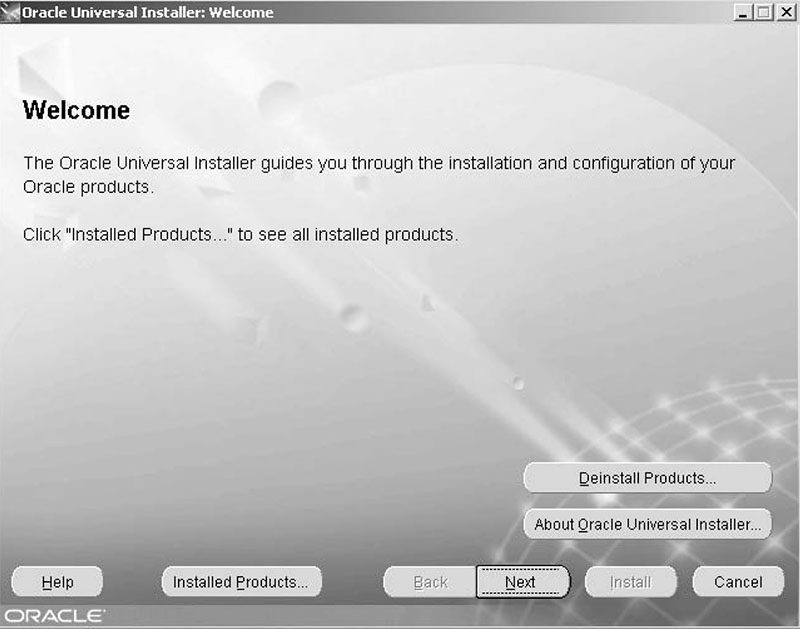| Lesson 3 | Using Net Configuration Assistant |
| Objective | Manage the tnsnames.ora with Net Configuration Assistant |
Net Configuration Assistant
Proper tnsnames.ora management
You already know that the function of the tnsnames.ora file is to "resolve" the TNS service name and obtain the host name, protocol, port, and database name. In this sense, the tnsnames.ora file is a look-up to this information.
Hence, all you need to define is:
Service Name Wizard
In the next lesson you will learn how to use the Oracle installer.
You already know that the function of the tnsnames.ora file is to "resolve" the TNS service name and obtain the host name, protocol, port, and database name. In this sense, the tnsnames.ora file is a look-up to this information.
Hence, all you need to define is:
- The name of your new service: In most cases you make the service name the same as your remote database name.
- The protocol: In most cases this will be TCP/IP.
- The host name of the remote server: If you do not know the name of the remote server, telnet to the server by IP address and enter the
uname -acommand at the UNIX prompt. - The port number of the remote server: This should always be left to the default of 1521.
- The system ID (SID) for your remote database: You can obtain the database names by going to the server and entering the following UNIX command:
cat /etc/oratab(orcat /var/opt/oratabfor HP-UX systems).
Service Name Wizard
In the next lesson you will learn how to use the Oracle installer.
Oracle Universal Installer

Installation Process
As part of the installation process, the Installer also runs the Net Configuration Assistant and the Database Configuration Assistant so that you will end up with a working Oracle instance when the process is complete. If for some reason, the installation fails, the commands that did not succeed are listed in a log file, which helps youu nderstand where the problem may lie and gives you a set of commands you can run yourself once the problem is fixed. Although the installation process is now the same for all platforms, there are still particulars about the installation of Oracle that relate to specific platforms.
Each release of the Oracle Database Server software is shipped with its own set of documentation. Included in each release are an 1) installation guide, 2) release notes (which include installation information added after the installation guide was published), and a 3)getting started book. You should read all of these documents prior to starting the installation process, since each of them contains invaluable information about the specifics of the installation. You will need to consider details such as where to establish the Oracle Home directory and where database files will reside. These issues are covered in detail in the documentation. In addition to the hardcopy documentation, online documentation is shipped on the database server media, and this provides additional information regarding the database and related products.
Each release of the Oracle Database Server software is shipped with its own set of documentation. Included in each release are an 1) installation guide, 2) release notes (which include installation information added after the installation guide was published), and a 3)getting started book. You should read all of these documents prior to starting the installation process, since each of them contains invaluable information about the specifics of the installation. You will need to consider details such as where to establish the Oracle Home directory and where database files will reside. These issues are covered in detail in the documentation. In addition to the hardcopy documentation, online documentation is shipped on the database server media, and this provides additional information regarding the database and related products.